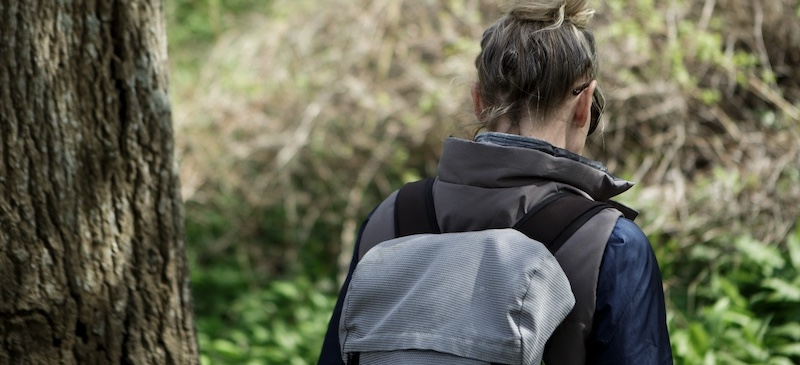This Dr. Axe content is medically reviewed or fact checked to ensure factually accurate information.
With strict editorial sourcing guidelines, we only link to academic research institutions, reputable media sites and, when research is available, medically peer-reviewed studies. Note that the numbers in parentheses (1, 2, etc.) are clickable links to these studies.
The information in our articles is NOT intended to replace a one-on-one relationship with a qualified health care professional and is not intended as medical advice.
This article is based on scientific evidence, written by experts and fact checked by our trained editorial staff. Note that the numbers in parentheses (1, 2, etc.) are clickable links to medically peer-reviewed studies.
Our team includes licensed nutritionists and dietitians, certified health education specialists, as well as certified strength and conditioning specialists, personal trainers and corrective exercise specialists. Our team aims to be not only thorough with its research, but also objective and unbiased.
The information in our articles is NOT intended to replace a one-on-one relationship with a qualified health care professional and is not intended as medical advice.
What Is Rucking & Is It Safe? Benefits, Downsides & How to Do It
September 26, 2024

Rucking is gaining popularity as an effective, low-impact workout that combines walking with the added challenge of carrying weight.
Originally a military training exercise, rucking has now become a favorite among fitness enthusiasts looking for a simple yet powerful way to build strength, endurance and cardiovascular fitness.
Whether you’re new to exercise or an experienced athlete, rucking can be easily adapted to suit your fitness level and goals.
In this article, we’ll cover what rucking is, how to get started, its benefits and downsides, safety tips, and frequently asked questions.
What Is Rucking?
Rucking is a form of exercise that involves walking or hiking while carrying a weighted backpack, also known as a rucksack. The added weight increases the intensity of the workout, helping build strength, endurance and cardiovascular fitness.
Rucking can be done almost anywhere — on city streets, trails or even on a treadmill — and is easily adjustable by changing the weight you carry or the distance you walk.
Rucking was originally used by military personnel to train soldiers, as it builds the stamina needed to carry heavy gear over long distances. Today, it’s embraced by fitness enthusiasts of all levels as a simple, effective way to get fit, burn calories and build muscle.
How to Ruck
1. Choose the right gear
Start with a sturdy backpack that can hold weight comfortably. You can use a specific rucksack designed for rucking or a regular backpack with weight plates, sandbags or other heavy items.
Make sure the bag has padded straps and distributes the weight evenly across your back.
2. Start light
If you’re new to rucking, start with a lighter weight, such as 10–15 pounds. Gradually increase the weight as your strength and endurance improve.
3. Warm up
Before rucking, warm up with light cardio and dynamic stretches to prepare your muscles and joints.
4. Focus on form
Maintain an upright posture with your shoulders back and core engaged. Walk with a natural stride, and avoid leaning forward, which can strain your back.
5. Choose your route
Start with flat terrain before progressing to hills or uneven surfaces. Choose a route that matches your fitness level, and adjust the distance and intensity over time.
6. Pace yourself
Rucking isn’t about speed. Aim for a steady pace that challenges you without overexertion.
Beginners should aim for a pace of 15–20 minutes per mile.
7. Cool down
After rucking, cool down with stretching and hydration to help your muscles recover.
Benefits
1. Builds strength and muscle
The added weight from the backpack increases resistance, helping build muscle in the legs, back, core and shoulders.
2. Boosts cardiovascular fitness
Rucking elevates your heart rate, improving cardiovascular endurance without the high impact of running.
3. Burns more calories
The combination of walking and carrying weight significantly increases calorie burn, making rucking an effective tool for weight loss.
4. Low impact
Unlike running, rucking is easier on the joints, making it a suitable option for people looking to avoid high-impact exercises.
5. Improves posture and core stability
Carrying weight while walking engages the core and promotes good posture, leading to better overall body mechanics.
6. Mental health benefits
The outdoor aspect of rucking, combined with the rhythmic nature of walking, can help reduce stress, improve mood and boost mental clarity.
7. Increases endurance
Regular rucking builds stamina and endurance, making it easier to perform other physical activities.
Downsides
1. Risk of injury
Carrying too much weight or using improper form can lead to back, knee or shoulder injuries. There’s also potential for injury when putting on or taking off a heavy rucksack.
It’s essential to start slowly and increase weight gradually.
2. Not suitable for everyone
People with existing back, knee or hip problems should consult a healthcare provider before starting rucking.
3. Requires proper gear
Investing in a quality backpack and weight plates can be an initial cost, although many can start with a basic backpack and household items for weight.
In addition, you need the proper footwear to avoid blisters and foot pain.
4. Time-consuming
Rucking is generally slower-paced compared to other workouts, so it may take more time to achieve the same level of exertion as other high-intensity exercises.
Is Rucking Safe? Safety Tips and Precautions
Rucking can be a safe and effective form of exercise when done properly, but there are some important factors to consider to protect your back and avoid injury.
- Start Light: Begin with a manageable weight to prevent strain — such as 5% to 15% of your body weight — and gradually increase it as your strength improves.
- Use Proper Footwear: Wear supportive shoes with good traction and ankle support to reduce the risk of slipping or injuries.
- Use Proper Form: Maintain good posture with a neutral spine, engage your core and lean forward slightly to counterbalance the weight.
- Distribute Weight Correctly: Pack the heaviest items close to your back and higher up in the rucksack.
- Stay Hydrated: Carry water, especially on longer rucks, to prevent dehydration.
- Listen to Your Body: Pay attention to signs of discomfort or pain. If something feels wrong, lighten your load or shorten your route.
- Warm Up and Cool Down: Properly warming up before rucking and stretching afterward can help prevent injuries.
- Avoid Overtraining: Incorporate rest days into your routine to allow your body to recover and adapt to the increased load.
Overall, rucking can be safe for your back and beneficial for overall fitness when approached gradually and with proper technique. However, it’s important to listen to your body, start conservatively and progress slowly to minimize the risk of injury.
Consulting with a fitness professional or healthcare provider before starting a rucking routine is advisable, especially if you have any pre-existing conditions or concerns.
FAQs
Does rucking really build muscle?
Yes, rucking helps build muscle, particularly in the legs, core, back and shoulders. The added resistance of carrying weight engages multiple muscle groups, promoting strength and endurance.
How heavy should you ruck?
Beginners should start with 10–15 pounds and gradually increase as they build strength. Experienced ruckers may carry 20–50 pounds, depending on their fitness levels and goals.
How far should I ruck as a beginner?
Start with a manageable distance, such as one to two miles, and gradually increase as your fitness improves. The goal is to challenge yourself without overexerting.
Is a weighted vest the same as rucking?
A weighted vest provides similar resistance but distributes weight differently compared to a rucksack. While both offer resistance training benefits, rucking with a backpack engages the back and shoulder muscles more directly.
Conclusion
- Rucking is a versatile and effective workout that combines the benefits of cardio and strength training in one activity.
- Whether you’re looking to lose weight, build muscle or simply add variety to your fitness routine, rucking offers a low-impact, accessible way to get moving.
- However, there are some precautions to keep in mind, as it can put extra strain on the body if you try to carry too much weight or don’t have the proper equipment.
- However, by starting with the right gear, pacing yourself and following safety guidelines, you can enjoy the many benefits of rucking while minimizing the risks.
- Ready to give it a try? Strap on your backpack, hit the trail and start rucking your way to better health!

